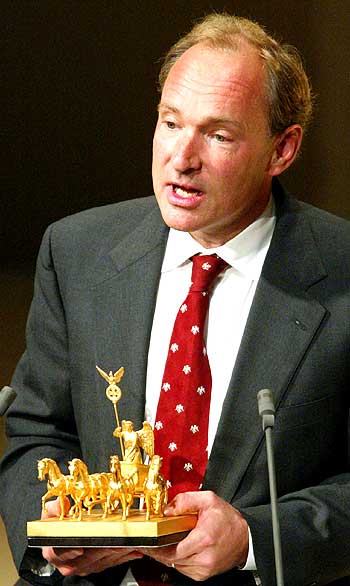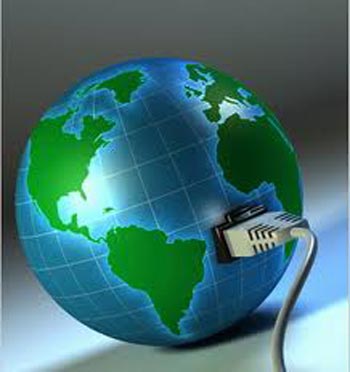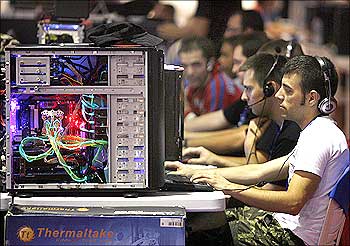 | « Back to article | Print this article |
The Web is 20 years old: What next?
Twenty years ago, a British computer scientist, Tim Berners-Lee, posted a short summary of a project on the alt.hypertext newsgroup, and also designed a crude website (http://info.cern.ch/hypertext/WWW/TheProject.html), with a few hyperlinks and some text to describe a project he christened the 'world wide web', or W3.
"I wrote the programme using a NeXT (a Steve Jobs company) computer...there were all the software parts to make a 'wysiwyg' (what you see is what you get -- direct manipulation of text on screen as on the printed, or browsed page) word processor. I just had to add hypertext, (by subclassing the text object)," reminisces Berners-Lee on the W3 website.
The W3 idea was conceived in March 1989 when Berners-Lee wrote a proposal, referring to a database and a software project he had built in 1980. With help from Robert Cailliau, he published a more formal proposal (on November 12, 1990) to build a hypertext project.
Click NEXT to read on . . .
The Web is 20 years old: What next?
Thus, what initially started as a project to help CERN, the European organisation for nuclear research, physicists communicate without cumbersome systems, helped bring the power of the Internet to the fingertips of users, quite literally.
People started flocking to browsers like Mosaic, Netscape Navigator, and Internet Explorer (IE) to browse the new sites.
Anyone with hypertext mark-up language (HTML) know-how could make a website. The phenomenon turned into a rage.
Click NEXT to read on . . .
The Web is 20 years old: What next?
In February 2009, an Internet monitoring company, Netcraft, reported there were 215,675,903 websites with domain names and content on them in 2009, compared to just 18,000 websites in August 1995.
Yet, many users think the terms Internet and world wide web are the same.
However, while the Internet is a global system of interconnected computer networks designed in the 1960s, W3 is one of the services that run on the Internet, albeit a very significant one.
Click NEXT to read on . . .
The Web is 20 years old: What next?
Between 2005 and 2010, the number of web users doubled and currently, the number is over two billion, according to Internet World Stats.
India alone has a little over 100 million Internet users. Mosaic is now Firefox, while the Netscape browser is history. IE remains the market leader, but with a dwindling marketshare, while Google's Chrome browser is gaining ground and Apple has a steady Safari browser following.
Web 2.0
The web, which started out as simple hyperlinks, graduated to Web 2.0 (the term was made popular by Tim O'Reilly, but dismissed as jargon by Berners-Lee) around 2000 and involved interactivity (using scripting and programming languages like Ajax, Flash and Javascript), animated images and more importantly, user-generated content.
Click NEXT to read on . . .
The Web is 20 years old: What next?
Examples include social networking sites, blogs, wikis, video-sharing sites, hosted services, web applications, mashups and folksonomies, which encouraged interactivity and collaboration.
Now, websites not only have text, images, podcast and videos, but also help users transact business online, buy goods from sites like Amazon and eBay. Search engines like Google and Bing and social networking sites like Facebook, Twitter and Google+ are changing the rules of online marketing, branding and rankings.
Location-based offerings from the likes of Google and FourSquare, while augmenting reality (melding real-world data with that of cyberspace) are simultaneously raising privacy issues on the Internet.
Click NEXT to read on . . .
The Web is 20 years old: What next?
Web 3.0 or 4.0?
While there's no clear definition of Web 3.0 (or Web 4.0 for that matter), there's a broad consensus that semantic web and personalisation are two major trends for the web in the next few years.
Semantic web comprises methods and technologies to allow machines to interpret the meaning of the information on the world wide web.
It is a collaborative effort led by W3C, with participation from a large number of researchers and industrial partners.
Click NEXT to read on . . .
The Web is 20 years old: What next?
The term was coined by Berners-Lee and the technologies involved include the resource description framework and the web ontology language, which are aimed at providing a formal description of concepts, terms, and relationships within a given knowledge domain.
However, the semantic web as a global vision remains a work in progress. For it to become successful there's a need for more semantic data on the web.
The semantic web makes it easier for search engines to understand the exact meaning of any information published on the Internet.
Click NEXT to read on . . .
The Web is 20 years old: What next?
In June, Google, Yahoo and Bing announced schema.org, which introduced a new standard for semantic 'markup' that makes it possible for search engines to make better sense of web content and online information.
With semantic technology being adopted by all major search engines, it is becoming increasingly important for brands to comprehend the effect this has on their search ranking and the way information is displayed on search engines.
However, the world wide web contains a little over 24 billion pages, and some of the challenges for the semantic web include vastness, vagueness, uncertainty, inconsistency, and deceit, according to Wikipedia.
Click NEXT to read on . . .
The Web is 20 years old: What next?
Personalisation, on its part, involves using technology to differentiate web pages based on the characteristics (interests, social category and context) of an individual. It implies changes are based on implicit data such as items purchased or pages viewed.
W3C technology
Founded in 1994, the W3 consortium (W3C) is simultaneously focusing on technologies to enable web access anywhere, anytime, using any device -- mobile phones, eBook readers, TV systems, voice response systems, music players, kiosks, digital picture frames, in-car navigation systems and even domestic appliances are all starting to access the web more and more (also referred to as the 'Internet of things').
It is working on standards to enable these devices communicate with each other. For instance, over 85 per cent of interactive voice response applications for telephones, including mobiles, use W3C's VoiceXML standard.
Click NEXT to read on . . .
The Web is 20 years old: What next?
According to W3C, as there are 10 times as many phones in the world as connected PCs, they would become the major portal to the web.
In India, around 60 per cent of users access the Internet (including wireless access protocol) through cellphones, according to Informate data.
Speech recognition is not yet widely associated with the 'visual web', but this would change as devices continue to shrink and make keyboards impractical, and as cellphones become more prevalent in regions with low-literacy rates.
Voice applications, according to W3C, would help people with disabilities.










